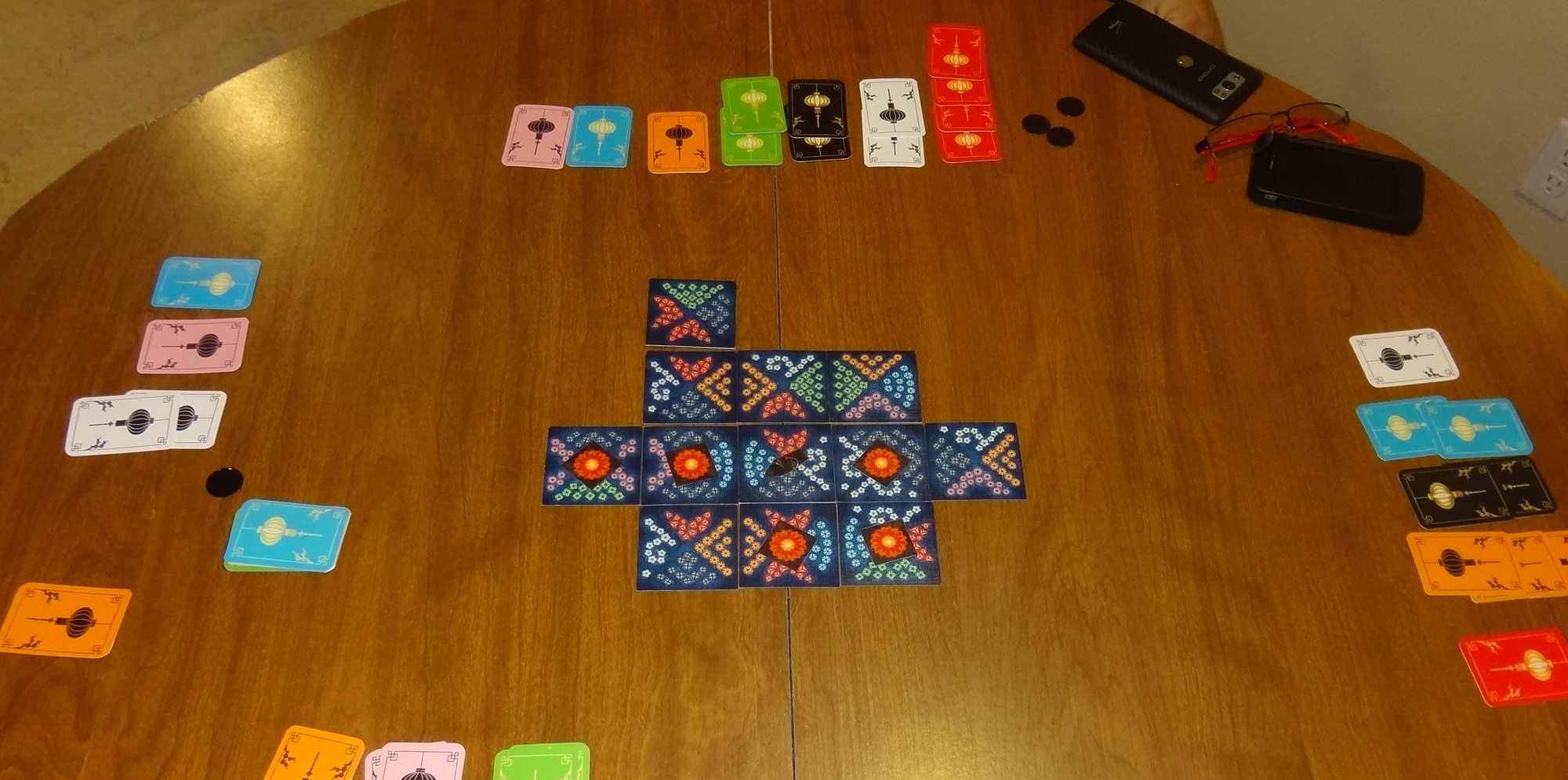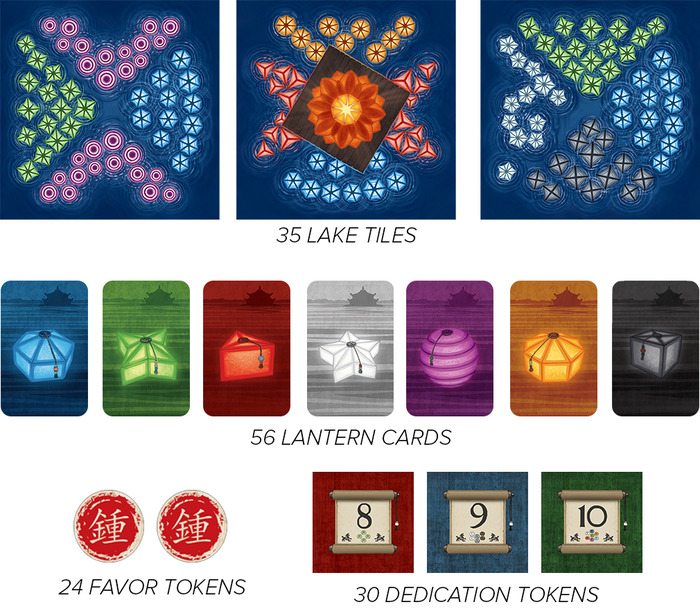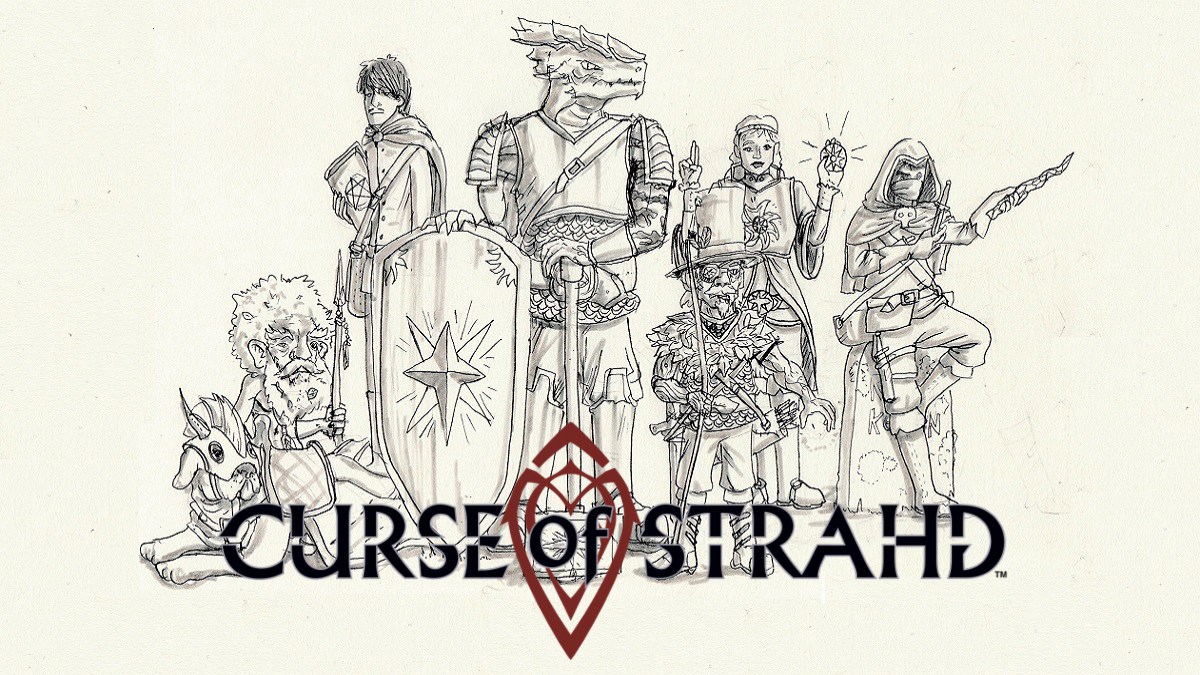It’s time for the Harvest Festival, and artisans are setting out beautiful floating lanterns in the palace lake, each trying to earn the most honor before the festival begins. Lanterns: The Harvest Festival is a tile-laying game set in imperial China, now on Kickstarter.
At a glance: Lanterns is for 2 to 4 players, ages 8 and up, and takes about 30 minutes to play. The pledge level for a copy of the game is $24.
New to Kickstarter? Read our crowdfunding primer.
Components
As shown above, Lanterns includes:
- 35 Lake tiles
- 56 Lantern cards (8 each in 7 colors)
- 24 Favor tokens
- 30 Dedication tokens
The copy I played was a prototype so the artwork wasn’t finalized and the components were just cardstock. However, the project has already hit a stretch goal to use a linen finish on the cards and tiles, and the artwork shown above resolves a few issues I had with the prototype version.
Each Lake tile is a square and depicts floating lanterns as seen from above. There are up to four different colors of lanterns, one for each edge, and some tiles also include a platform. The Lantern cards simply show one color each. One nice touch is that the lanterns have different colors and shapes, so that color blind players will still be able to tell the various lanterns apart.
How to play
The rules and a print-and-play are available for download. (If you already have Ticket to Ride, you can use the train cards as a substitute for the Lantern cards, which will save you a good deal of paper and ink.)

If you’re playing with 2 or 3 players, you’ll remove some of the Lantern cards, Lake tiles, and Dedication tokens before playing. Then the Lantern cards are sorted into stacks by color, and the Dedication tokens are placed in three stacks sorted by type, with the highest numbers at the top. Each player gets 3 Lake tiles to start, and the starting tile is placed in the center of the table in a random orientation. Each player gets a Lantern card matching the color facing them on the starting tile.
On your turn, you do the following:
- Exchange a Lantern (optional)
- Dedicate Lanterns (optional)
- Discard down to 12 Lanterns (mandatory)
- Place Lake tile (mandatory)
You may pay 2 Favor tokens to exchange a Lantern card for another, once per turn. Then, if you have an eligible set of Lantern cards, you may turn them in for a Dedication token, which is worth points. You need either four cards of the same color, three pairs, or all seven colors. When you turn in a set, you take the top Dedication token of that type, and the next player to dedicate that type will get the next lower token.

When you play a Lake tile, it just has to be placed adjacent to any other tile. The colors don’t have to match, but if they do, you get a bonus card of the colors that you match. Also, if you match edges with any tiles that have platforms on them, you’ll get a favor token for each platform matched.
Finally, everyone gets a lantern card matching the color that’s facing them on the tile that was just played, and then the active player draws another Lake tile.
The game continues until all of the Lake tiles have been placed, and then there’s one final round for players to use the Exchange/Dedication actions (but no tile placement). The highest score wins, with Favor tokens and Lantern cards serving as tiebreakers.

The Verdict
One of the things I love most about tile-laying games is seeing how everything looks at the end of the game, because it’s like piecing together a map as you play. Lanterns has a beautiful look to it when you finish, with all the colored lanterns floating around in the lake.
Lanterns is easy to learn and plays pretty quickly. You do get to make some interesting choices throughout the game but it’s generally not overwhelming. I think a key element of the game is the way that everyone draws Lantern cards when a tile is played, based on its orientation. That means you need to pay attention to what cards other players have already collected so that you don’t give them cards that will let them steal away a Dedication token you’re going for. Another tactic is to run out stacks of Lantern cards so that you can play a tile in such a way that another player doesn’t have anything to take.
The decreasing scores on the Dedication tokens means that it’s always a race to pick up the higher-valued tokens, which then affects what you’re trying to collect. If you’re last to collect tokens, though, you can get stuck—if another player has grabbed two of the top scores, it can be hard to make up that difference by getting more tokens. I haven’t figured out a great strategy for that yet.
Overall, Lanterns is a nice entry-level tile-laying game. It’s easy enough to pick up that you can play with your kids, but does offer some nice tactical choices if you want to be more cutthroat. If you like really deep strategy then it may be a little light for you, but I enjoyed it.
For more information or to pledge for a copy, visit the Lanterns Kickstarter page.
Disclosure: GeekDad received a demo prototype for review.






